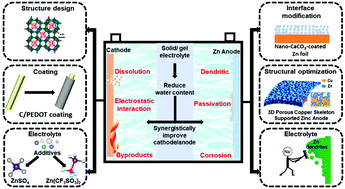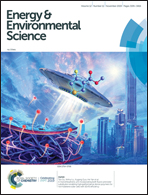Issues and opportunities facing aqueous zinc-ion batteries
Abstract
Zinc-ion batteries built on water-based electrolytes featuring compelling price-points, competitive performance, and enhanced safety represent advanced energy storage chemistry as a promising alternative to current lithium-ion battery systems. Attempts to develop rechargeable aqueous zinc-ion batteries (ZIBs) can be traced to as early as the 1980s; however, since 2015, the research activity in this field has surged throughout the world. Despite the achievements made in exploring electrode materials so far, significant challenges remain at the material level and even on the whole aqueous ZIBs system, leading to the failure of ZIBs to meet commercial requirements. This review aims to discuss how to pave the way for developing aqueous ZIBs. The current research efforts related to aqueous ZIBs electrode materials and electrolytes are summarized, including an analysis of the problems encountered in both cathode/anode materials and electrolyte optimization. Some concerns and feasible solutions for achieving practical aqueous ZIBs are discussed in detail. We would like to point out that merely improving the electrode materials is not enough; synergistic optimization strategies toward the whole battery system are also deeply needed. Finally, some perspectives are provided on the subsequent optimization design for further research efforts in the aqueous ZIB field.



 Please wait while we load your content...
Please wait while we load your content...